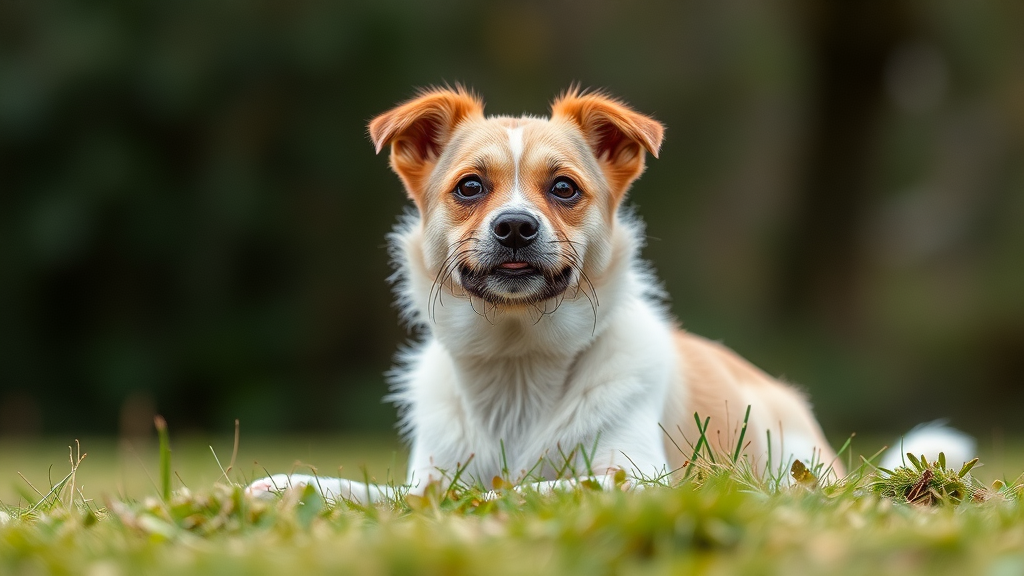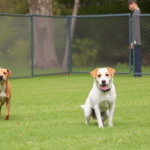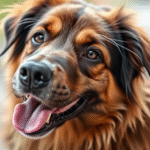The Most Rare Dog Breed in the UK: An In-Depth Look
The world of dog breeds is rich and diverse, but some breeds are rarer than others, especially in the UK. Understanding which dog breed holds the title of the most rare can offer insights into unique pet ownership experiences. Let’s explore some of these rare breeds, focusing on the most elusive of them all.
Top Contenders for the Rarest Dog Breed in the UK
When it comes to rare dog breeds, a few tend to stand out due to their limited population, specialized breeding, or historical significance. Here are some of the most notable contenders:
- Norfolk Terrier: Originally bred as a working dog, this breed is recognized for its playful and friendly demeanor. Despite its charm, the Norfolk Terrier remains one of the UK’s less common breeds.
- American Akita: Known for their loyalty and protective nature, American Akitas are growing in popularity but are still considered rare in the UK.
- Field Spaniel: This breed was once one of the most popular among sporting dogs but has dwindled in numbers. Their friendly and gentle temperament makes them great family pets.
- Otterhound: A scent hound, Otterhounds are known for their unfaltering dedication to their work. They are incredibly rare, with fewer than 600 left in the world, making them extremely difficult to find in the UK.
The Most Rare: The Otterhound
The Otterhound stands out as one of the rarest dog breeds in the UK. With its unique features and history, it offers much to potential pet owners.
Characteristics of the Otterhound
| Size | Weight | Life Expectancy |
|---|---|---|
| Large | 50-115 lbs | 10-12 years |
Otterhounds possess a distinctive coat, which is dense and waterproof, designed to assist them while hunting otters. They are friendly and enthusiastic, making them great companions.
History of the Otterhound
This breed dates back to the 18th century, primarily developed for hunting otters in the waterways of England. As otters became protected and their numbers dwindled, the Otterhound’s utility decreased, leading to its decline. Today, breeders are working tirelessly to increase their numbers.
Why You Might Consider Owning a Rare Breed
Owning a rare breed can offer several unique advantages. Think about the following:
- Uniqueness: Rare dog breeds stand out in a crowd, allowing owners to enjoy a one-of-a-kind companion.
- Community: Rare breeds often foster dedicated communities of enthusiasts, providing valuable support and shared knowledge.
- Heritage: Many rare breeds have rich histories and stories, adding a layer of intrigue and connection to pet ownership.
Challenges of Owning a Rare Breed
While the prospect of owning a rare breed is exciting, it’s essential to acknowledge some challenges:
- Availability: Finding a breeder can be tough, and prices may be higher due to rarity.
- Health Considerations: Some rare breeds may have specific health issues, requiring potential owners to conduct thorough research.
- Training and Socialization: Rare breeds may require specialized training to thrive, necessitating dedicated time and resources.
Where to Find Information about Rare Breeds
Learning more about these breeds requires researching dedicated sources. Some valuable resources include:
- The Kennel Club: A primary authority for dog breeds in the UK.
- Breed-Specific Rescues: Organizations focused on helping specific dog breeds find homes.
- Dogs Trust: A UK-based dog welfare charity supporting various breeds, including rare ones.
Exploring the world of rare dog breeds opens up many fascinating possibilities. If you’re considering welcoming a unique furry friend into your life, breeds like the Otterhound might just be what you’re looking for.
Historical Background of Rare Dog Breeds
Throughout history, dog breeds have evolved alongside humans, serving various purposes based on the needs of their owners. Many of these breeds have become rare over time due to changing lifestyles and preferences. The story of rare dog breeds is often intertwined with cultural significance, geographical constraints, and agricultural practices. Understanding the historical background of these breeds provides insight into their uniqueness and the reasons behind their scarcity.
In the UK specifically, several factors have led to the rarity of certain breeds. Breeders, who once focused on utility and work, shifted towards aesthetics and companionship. As the demand for certain breeds surged, others dwindled, leading to a decline in their populations. Additionally, global events such as wars and economic changes had a profound impact on the breeding and preservation of dog breeds.
A significant factor contributing to the rarity of certain breeds is the influence of industrialization. In the rural communities of the UK, dogs were primarily bred for specific tasks such as farming, herding, and hunting. However, as urbanization took hold, the roles of these working dogs diminished. The demand shifted towards smaller breeds that suited apartment living and urban lifestyles. As a result, many rare breeds fell into obscurity as their working capabilities became less relevant.
The rarity of a breed is often reflected in its numbers. Here are a few dog breeds that have found themselves in this situation:
- The Skye Terrier: Originally bred in Scotland to hunt small game, this breed is quite rare today with only a limited number of Skye Terriers remaining. Their long, flowing coat and distinct appearance make them highly sought after by collectors.
- The Welsh Terrier: Once a popular companion and working dog, the Welsh Terrier has become less common. It retains a loyal following, but its numbers in the UK continue to decrease.
- The Otterhound: Known for their exceptional swimming abilities, Otterhounds were bred for hunting otters. Only a few hundred exist worldwide, making them one of the rarest breeds in the UK.
- The English Foxhound: While this breed was once widespread, it is now rarely seen outside of its hunting circles. The English Foxhound is a symbol of the UK’s hunting heritage, yet its population remains low.
Many of these rare breeds have fascinating histories that trace back to regional needs. For example, the Skye Terrier was vital in controlling vermin on the Isle of Skye. This unique connection to the land and culture has made preservation efforts more important. Organizations and breed clubs, such as the Kennel Club, work tirelessly to maintain breed standards and promote awareness. This helps ensure that these rare breeds don’t disappear entirely.
Another interesting aspect of rare dog breeds is the genetic health issues they often face. Breeds that are bred in small populations can suffer from inbreeding, leading to increased health problems. Preservation efforts must not only focus on maintaining numbers but also on promoting genetic diversity. By fostering a diverse breeding program, enthusiasts can help mitigate health issues and improve the well-being of these rare breeds.
The rise of social media and online communities has also played a pivotal role in raising awareness about rare breeds. People are more connected than ever, sharing stories, pictures, and experiences of owning unique dogs. This online engagement helps attract potential owners who may be interested in adopting rare breeds, further contributing to their preservation.
Moreover, events and exhibitions celebrating rare breeds provide additional platforms for promoting and preserving these unique animals. Engaging activities, such as dog shows and breed fairs, generate interest from both the public and potential breeders. The visibility gained from such events can encourage a resurgence in popularity for breeds that were once difficult to find.
To summarize, the historical journey of rare dog breeds in the UK provides a complex view of the interplay between human needs and canine evolution. Recognizing the importance of these breeds not only enriches our understanding of canine history, but it also emphasizes the responsibility we hold to preserve these unique companions for future generations. For more insights into rare dog breeds, visit Dogs Trust or the American Kennel Club.
Characteristics of the UK’s Least Common Canines
When it comes to dog breeds, the UK is home to some of the rarest and most unique canines in the world. Understanding these breeds involves exploring their characteristics, temperaments, and origins. Many of these dogs not only have striking appearances but also fascinating histories that contribute to their rarity.
One of the most notable rare breeds in the UK is the Catahoula Leopard Dog. Originating from Louisiana in the United States, this breed is recognized for its striking coat with unique color patterns and merle designs. Catahoulas are exceptionally intelligent, energetic, and known for their herding instincts. Additionally, they often form strong bonds with their families, making them loyal companions.
Another rare breed that you may encounter is the Irish Water Spaniel. With its curly, water-resistant coat and robust build, this breed excels in agility and water-related activities. The Irish water spaniel is excellent for families due to its playful nature and adaptability. Despite being one of the oldest spaniel breeds, its numbers are dwindling in the UK, making it a rare find.
Please consider the Norfolk Terrier, another breed that has remained relatively uncommon. Known for its ruggedness and tenacity, the Norfolk Terrier is friendly and has a great temperament. It is intelligent and easily trainable but requires regular exercise to remain healthy and happy. These terriers rarely appear in dog shows, contributing to their scarcity.
One unique breed to look out for is the Kerry Blue Terrier. Known for its beautiful blue-gray coat and distinctive curly fur, this breed offers a lively personality. Its robust nature and agility make it suitable for both work and companionship. Unfortunately, their numbers are low, which adds to their rarity, especially across England.
| Breed Name | Characteristics | Temperament | Rarity Level |
|---|---|---|---|
| Catahoula Leopard Dog | Unique coat patterns, Intelligent | Loyal, Energetic | High |
| Irish Water Spaniel | Curl, Robust | Playful, Adaptable | High |
| Norfolk Terrier | Rugged, Tenacious | Friendly, Intelligent | Medium |
| Kerry Blue Terrier | Blue-gray coat, Curly fur | Lively, Agile | Medium |
While the above breeds are not the only rare dogs you might find in the UK, they represent just a few of the intriguing canines that contribute to the rich tapestry of dog breeds. Breeds such as the Coton de Tulear and the Glen of Imaal Terrier also share space in the rarer segment of dog breeds. These dogs possess distinct features and personalities that set them apart.
Many owners and breeders advocate for these rare breeds by participating in breed shows and competitions. Engaging with organizations like the Kennel Club can help raise awareness and increase the visibility of these unique canines. It’s worth exploring shows and events that showcase rare breeds, providing a chance for enthusiasts to learn more about these remarkable companions.
Understanding the characteristics of these remarkable breeds offers insight into what makes them so special. Aside from their rarity, these dogs bring joy, companionship, and love into the lives of their owners. For anyone considering bringing a rare dog into their home, it’s essential to research their traits and needs thoroughly.
The Impact of Breeding Practices on Dog Rarity
Dog breeding practices significantly affect dog rarity, especially in the UK. Over generations, selective breeding has shaped various breeds, leading to some becoming increasingly rare. Understanding how breeding entails careful selection and potential limitations can shed light on the scarcity of certain dog breeds.
Selective breeding focuses on specific traits, including appearance, temperament, and health. In the UK, this has led to certain breeds being favored while others are neglected. This favoritism creates a noticeable disparity among dog populations, affecting overall breed survival and health. For instance, the Kennel Club monitors breed registrations to analyze trends, revealing that popular breeds often overshadow rare ones.
Breeding practices, while sometimes beneficial for enhancing desirable traits, can also create challenges. For example, many breeds become rare due to limited gene pools. A smaller gene pool may cause health issues and reduce variability, leading to vulnerability among breeds. This situation is particularly true for breeds such as the Norfolk Terrier and Tibetan Mastiff, both of which are considered rare in the UK.
- Norfolk Terrier: Known for their affectionate nature, they have struggled with popularity, causing their numbers to dwindle in recent years.
- Tibetan Mastiff: Valued for their protective qualities, this breed is rare in the UK due to specialized care needs and breeding challenges.
Breeding laws and regulations can determine how dogs are bred and which breeds are promoted. The UK has various regulations focused on animal welfare that impact breeding practices. Adhering to these laws is crucial for ethical breeding, enabling the generation of healthier dogs. Programs promoting responsible breeding help attracted enthusiasts willing to adopt rare breeds, fostering their growth.
Another factor contributing to dog rarity is owner awareness and education. Many dog lovers may not recognize rare breeds, leading them to choose popular options. When potential dog owners seek information, they often gravitate toward breeds like French Bulldogs or Golden Retrievers, neglecting the consideration of rare breeds. Breeders and rescues play an essential role in raising awareness about less-known breeds through educational initiatives.
The impact of breeding practices on dog rarity can be illustrated through relevant statistics. According to the Kennel Club, breed registration statistics between 2020 and 2022 show a stark contrast between the most popular and rare breeds. Below is a brief overview:
| Breed | 2020 Registrations | 2021 Registrations | 2022 Registrations |
|---|---|---|---|
| Cavalier King Charles Spaniel | 24,000 | 25,500 | 26,000 |
| Briard | 300 | 250 | 200 |
| Norfolk Terrier | 400 | 350 | 300 |
| Tibetan Mastiff | 250 | 500 | 450 |
As shown, some breeds see a steady decline while others maintain or increase their registrations. Understanding these statistics can help aspiring dog owners make informed choices and support breed preservation. It’s crucial to balance popular preferences with efforts to protect rare breeds from further decline.
Community involvement can also decisively impact dog rarity. Support for local breeders, rescue organizations, and breed-specific events can bolster rare breed awareness and promote their value in communities. By participating in events or initiatives, dog enthusiasts can play an active role in reducing the rarity of these beautiful breeds.
The impact of breeding practices on dog rarity manifests in various forms, from selective breeding to community involvement. By recognizing the factors that contribute to breed decline and advocating for responsible breeding, dog lovers can work towards sustaining the unique diversity of dog breeds across the UK.
How to Care for Rare Dog Breeds
Caring for rare dog breeds requires special attention and knowledge. These breeds often have unique needs that differ from more common dog types. Here are some essential aspects to consider for the best care of rare dog breeds.
Understanding Their Unique Needs
Each rare dog breed has distinctive characteristics. Understanding these traits is crucial for optimal care. Consider the following:
- Temperament: Research the behavior and personality traits of your breed. Some may be more reserved, while others may be highly energetic.
- Health issues: Rare breeds can be prone to specific genetic health problems. Regular check-ups with a veterinarian familiar with the breed can help catch issues early.
- Diet: Tailor their diet according to their age, activity level, and health needs. Consult your vet to ensure you’re providing the best nutrition.
Exercise Requirements
Regular exercise is important for all dogs, especially rare breeds that can be more sensitive or prone to anxiety. To keep your rare breed happy and healthy:
- Daily walks: Aim for at least one long walk or two shorter walks daily.
- Engaging activities: Look for activities that suit their energy level. For some breeds, agility training or dog sports may be beneficial.
- Mental stimulation: Rare breeds often require mental exercise. Puzzle toys or training sessions help keep their minds sharp.
Grooming Needs
Grooming can vary greatly depending on the breed. Here are a few common grooming practices:
- Regular brushing: Many rare breeds have specific coat types, which must be brushed regularly to prevent matting.
- Bathing: Bathe your dog based on their coat and skin needs. Rare breeds may need special shampoos formulated for their skin type.
- Nail trimming: Regular nail care is essential. If you’re unsure how to trim nails safely, ask your vet or a professional groomer for guidance.
Socialization and Training
Socializing and training are crucial for any dog, especially rare breeds that can become anxious or uncertain in new situations. Follow these tips:
- Early socialization: Start exposing your rare breed to a variety of environments, people, and other animals at a young age.
- Positive reinforcement: Use treats and praise to encourage good behavior during training sessions.
- Consistency is key: Consistent training routines help establish trust and security in your dog.
Health Monitoring
Since rare breeds can have unique health concerns, regular monitoring is essential. Key practices to follow include:
- Veterinary visits: Schedule regular check-ups with a vet experienced with rare breeds.
- Watch for symptoms: Be aware of any changes in your dog’s behavior, appetite, or energy levels, as these can indicate health problems.
- Vaccinations and preventive care: Ensure vaccinations are up to date, and discuss parasite control options with your vet.
Resources for Rare Dog Breeds
Accessing specialized information can also help in caring for your rare breed. Consider visiting:
- The Kennel Club for breed specific information and health guidelines.
- British Dog Groomers Association for grooming tips and tutorials.
- Vets4Pets for a wide range of veterinary advice and services tailored to your dog’s needs.
By understanding the specific requirements of your rare dog breed, you can provide the best possible care. Taking the time to learn about their needs will ensure they live a happy and healthy life.
The Role of Rare Dogs in British Culture
In British culture, the presence of rare dog breeds reflects both tradition and the evolution of pet ownership. Rare dogs are often associated with specific regions, history, and the socio-economic conditions of their time. The unique characteristics of these breeds contribute significantly to the rich tapestry of British life and heritage.
One prominent rare dog breed in the UK is the Otterhound. This breed was historically valued for its hunting ability, particularly in tracking otters in the wetlands of England. The rarity of the Otterhound today can be attributed to changes in hunting regulations and declining otter populations, which have significantly diminished the demand for these skilled hunters. These dogs are known not only for their endurance but also for their friendly and gentle nature, making them good family companions.
Another fascinating breed is the Whippet. Although it has gained popularity in recent years, it remains relatively rare compared to other breeds. Whippets have historical significance, having been bred primarily for racing and hunting small game. Their sleek physique and graceful movements have endeared them to dog enthusiasts, and they symbolize a complex relationship between sport and companionship in British history.
Other rare breeds, such as the Hovawart, bring a slice of foreign heritage to British culture. With its origins in Germany, the Hovawart was originally a working dog, bred to guard properties and assist with livestock. This breed has made its way into the UK as people seek diversity in their canine companions. As an intelligent and versatile dog, the Hovawart is slowly gaining recognition and adds to the unique variety within Britain’s canine population.
The Bedlington Terrier also stands out due to its distinct appearance and personality. Known for its lamb-like looks and affectionate nature, the Bedlington Terrier has been part of the British landscape since the 19th century. While these dogs were once used for hunting and to control vermin, today, they’re cherished as safe, loving, and loyal family pets.
Understanding the Importance of Rare Breeds
Rare dog breeds play a crucial role in maintaining genetic diversity among canine populations. They often represent specific regions and cultures, preserving the history and identity of those areas. Here are some reasons why rare breeds matter:
- Preservation of Heritage: Rare breeds help preserve the history and heritage associated with their origins. They symbolize a connection to past agricultural and working practices that are vital for cultural understanding.
- Genetic Diversity: Maintaining rare breeds is essential for genetic health in dogs, preventing over-breeding of common breeds, and reducing hereditary health issues.
- Education: Rare breeds often provide an opportunity to educate the public about responsible pet ownership and the importance of breed-specific traits.
- Community: Enthusiasts and breeders of rare dog breeds often form tight-knit communities that celebrate their shared passion, fostering connections and engagement across the UK.
Efforts to Support Rare Breeds
Numerous organizations in the UK advocate for the preservation of rare dog breeds. Groups such as The Dog’s Trust and the Rare Breeds Survival Trust work tirelessly to promote awareness and education about these breeds, as well as championing responsible breeding practices. They also host events and competitions to showcase rare dogs, allowing the public to appreciate their uniqueness.
Rare dog breeds hold a special place in British culture. They connect us to our past and remind us of our responsibility as pet owners. Whether your interest lies in history, genetics, or community, there is much to appreciate about the rare breeds that enrich our lives.
For further reading and insights into rare dog breeds and their role in British culture, consider visiting:
Tips for Finding Rare Dog Breeds in the UK
Searching for rare dog breeds in the UK can be a thrilling adventure for any dog lover. With countless breeds available, finding those that are less common requires some strategic planning and knowledge. Here are some insightful tips to guide you in your quest to discover rare dog breeds throughout the UK.
Understand What Makes a Dog Breed Rare
A rare dog breed is typically one that has a limited population. Various factors may contribute to a breed’s rarity, including low birth rates, specific breed standards, and decreased popularity over time. Understanding these aspects will help you identify which breeds are considered rare.
Research Breed Clubs
Breed clubs are an excellent resource for discovering rare breeds. These organizations are often dedicated to preserving specific breeds and can provide valuable information about their characteristics, health issues, and available breeders. A couple of notable breed clubs in the UK include:
Attend Dog Shows and Fairs
Dog shows and fairs are opportunities to see rare breeds up close. These events often showcase a variety of breeds, including those that are hard to find. Engaging with breeders at these shows allows you to ask questions and gain insights into the availability of rare breeds. Make sure to check local event calendars for upcoming dog shows in your area.
Network with Local Breeders
Building connections with local breeders can enhance your chances of finding a rare dog breed. Look for breeders who specialize in less common breeds and reach out to them directly. Here are some ways to do this:
- Search online directories for breed-specific breeders.
- Join dog owner groups on social media platforms.
- Visit local shelters and rescue organizations that may have rare breeds available for adoption.
Utilize Online Resources
The internet is filled with resources that can help you find rare dog breeds. Websites dedicated to dog breeds can provide valuable details about their origin, care, and temperament. Additionally, there are forums where dog owners share their experiences and tips. Some useful online platforms include:
Consider Adoption
Adopting a rare breed from a rescue organization can be a fulfilling option. Many breed-specific rescues focus on rare breeds and can connect you with dogs in need of a home. Not only will you provide a loving environment for a dog, but you’ll also help preserve the breed. Look for breed rescue organizations online; they often list dogs available for adoption on their websites.
Keep Options Open
While you may have a specific rare breed in mind, being open to other breeds can broaden your search. Sometimes a breed that’s considered rare can have similar characteristics or temperament traits to another breed that’s more common. This mindset can make your search for the perfect canine companion more successful.
Patience is Key
Finding a rare dog breed often takes time and effort. Whether you’re contacting breeders, attending shows, or waiting for a dog to become available at a rescue center, it’s crucial to be patient. The perfect rare breed for you is definitely worth the wait!
Consider the Long-Term Commitment
Owning any dog requires a long-term commitment. This is especially true for rare breeds that may have specific care needs. Make sure to research the breed’s health issues, grooming requirements, and exercise needs before making a decision. This can help you ensure a good match for your lifestyle.
By following these tips and conducting thorough research, you will enhance your chances of finding the most rare dog breed in the UK. Embrace this exciting journey, and remember that the right companion is just around the corner!
For more information on specific rare breeds and their traits, visit AKC Dog Breeds to explore extensive breed profiles.
Key Takeaway:
Key Takeaway
When exploring the fascinating world of rare dog breeds in the UK, it’s essential to recognize their unique characteristics and the cultural significance they hold. The most rare dog breed in the UK represents more than just an uncommon pet; it encapsulates a rich historical narrative. Understanding the historical background of these breeds reveals how selective breeding and changing societal needs have shaped their development over time. Many rare dogs, like the Otterhound or the English Foxhound, have origins steeped in practicality, serving specific roles in hunting and companionship.
The characteristics that distinguish these breeds often include unique physical traits, temperaments, and behaviors that set them apart from more common dogs. Their rarity can make them special and valuable companions for those willing to embrace their distinctive needs. However, it’s crucial to acknowledge that the rarity of these dog breeds can often be linked to breeding practices that prioritize looks over health. As potential owners, being informed about the implications of these practices is essential for the well-being of both the dogs and their new families.
Caring for rare dog breeds involves understanding their specific care requirements, including diet, exercise, and socialization needs. This attention to detail is not just about providing a home; it’s also about ensuring their health and happiness. Moreover, these breeds have a special place in British culture, often featured in folklore and art, making them a living connection to our heritage.
For those interested in finding these rare breeds, aware of the significance such dogs hold, it’s vital to approach reputable breeders and rescues that prioritize ethical breeding and the overall welfare of their animals. The journey to find a rare dog breed can be rewarding, allowing you to become part of a unique narrative that celebrates both the breed’s history and the bond you will form with your new companion. By appreciating and caring for rare breeds, you contribute to the continuation of their legacy while enriching your own life with a loyal friend.
Conclusion
When exploring the world of rare dog breeds in the UK, you uncover a tapestry woven with history, culture, and a unique set of characteristics that make these canines special. The deep-rooted historical background of rare dog breeds reveals how societal needs, changing lifestyles, and breeding practices have influenced their existence, often determining which breeds thrive and which fade into obscurity.
Each rare breed serves as a reminder of the rich tapestry of canine variety, showcasing distinct traits that set them apart from their more common counterparts. Understanding these characteristics can enhance your appreciation for the less conventional choices in the dog world. Moreover, the impact of breeding practices cannot be overlooked; responsible breeding is essential to maintaining the health and viability of these breeds, ensuring they do not vanish entirely.
Caring for a rare dog requires knowledge and commitment, as these breeds often come with specific needs that differ from standard breeds. Proper care not only ensures a healthy life for your furry friend but also contributes to the preservation of their unique lineage. Additionally, rare dogs occupy a special place in British culture, often associated with traditions and histories that enrich the connection between humans and dogs.
If you’re considering adding a rare breed to your family, remember that locating a reputable breeder is crucial. This way, you can not only help sustain these magnificent dogs but also become part of a passionate community dedicated to their preservation. With the right information and intent, embracing the companionship of a rare dog breed can be a fulfilling and enriching experience for you and your family.







Leave a Reply